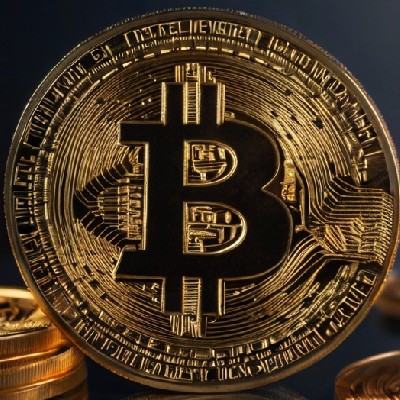
Fuse priceFUSE
FUSE/USD price calculator
Fuse market Info
Live Fuse price today in USD
Do you think the price of Fuse will rise or fall today?
Now that you know the price of Fuse today, here's what else you can explore:
How to buy Fuse (FUSE)?How to sell Fuse (FUSE)?What is Fuse (FUSE)What would have happened if you had bought Fuse (FUSE)?What is the Fuse (FUSE) price prediction for this year, 2030, and 2050?Where can I download Fuse (FUSE) historical price data?What are the prices of similar cryptocurrencies today?Want to get cryptocurrencies instantly?
Buy cryptocurrencies directly with a credit card.Trade various cryptocurrencies on the spot platform for arbitrage.Fuse price prediction
When is a good time to buy FUSE? Should I buy or sell FUSE now?
What will the price of FUSE be in 2026?
In 2026, based on a +5% annual growth rate forecast, the price of Fuse(FUSE) is expected to reach $0.009398; based on the predicted price for this year, the cumulative return on investment of investing and holding Fuse until the end of 2026 will reach +5%. For more details, check out the Fuse price predictions for 2025, 2026, 2030-2050.What will the price of FUSE be in 2030?
About Fuse (FUSE)
What Is Fuse?
Fuse is an Ethereum-compatible blockchain platform aimed at simplifying Web3 technology adoption for businesses and developers. By focusing on accessible and efficient transaction solutions, Fuse empowers companies—whether Web2 entities seeking blockchain integration or Web3-native projects—to incorporate blockchain functionality into their applications. The Fuse platform is public, decentralized, and permissionless, allowing anyone to transact, build applications, or run a validating node to help secure the network.
Key features of the Fuse platform include fast transaction times (under five seconds), low transaction fees (around $0.0001 per transaction), and full compatibility with the Ethereum Virtual Machine (EVM). This compatibility allows applications deployed on Ethereum or other EVM-based networks to work seamlessly on Fuse, making it adaptable for gaming, social platforms, payments, and decentralized finance (DeFi) solutions. Additionally, Fuse’s future development includes a transition to a layer-2 platform called Fuse Ember, which will use the Polygon CDK to offer higher throughput, lower costs, and enhanced interoperability with other Polygon chains.
How Fuse Works
Fuse operates on a Delegated Proof of Stake (DPoS) consensus model, a modified version of Proof of Stake (PoS). This model allows for a decentralized network where validators are chosen based on their staked tokens rather than computational power. Fuse’s DPoS structure introduces delegators, token holders who prefer not to run a node but still want to participate in the network’s governance. By delegating their staked FUSE tokens to selected validators, these users can help secure the network and share in the rewards validators receive for processing transactions.
Fuse’s unique implementation of the Authority Round (AuRa) consensus mechanism enables validators to take turns validating blocks in a round-robin format. Each validator has a five-second window to validate a block, during which transactions are confirmed and rewards distributed. This efficient block production method supports fast transaction confirmation times. Validators are incentivized to maintain the network's security and stability as they earn block rewards and transaction fees, but they also face penalties (like temporary suspension) if they act against the network’s rules.
Validators and delegators can earn rewards proportional to the amount of FUSE staked. Every 2-day cycle, the network takes snapshots to update the validator set, determining which participants are eligible for rewards. If a validator consistently fails to meet the network's requirements, they may be replaced by others with more reliable performance or higher stakes.
What Is the FUSE Token Used For?
The FUSE token is the native cryptocurrency of the Fuse network, used for multiple purposes within the ecosystem:
-
Transaction Fees: FUSE is used to pay transaction fees (gas) on the Fuse blockchain, making it essential for any activity within the network.
-
Payments: FUSE can be transferred directly between users, allowing businesses and users to conduct payments without involving complex smart contract interactions.
-
Staking and Validation: Users who wish to become validators on the Fuse network must stake a minimum of 100,000 FUSE tokens. This stake requirement helps maintain network security and ensures validators have a vested interest in the network’s integrity. Token holders who don’t want to run nodes can delegate their FUSE to validators and earn a share of the rewards.
-
Governance: Validators can use their staked FUSE to vote on proposed changes to the Fuse protocol, impacting aspects like validator set selection, staking mechanics, and block rewards. Validators who receive delegated FUSE from other users gain additional voting weight, giving them greater influence over network upgrades and governance decisions.
-
Cross-Chain Transactions: FUSE supports interoperability with Ethereum and other blockchains through Fuse Bridge, AllBridge, and LayerSwap. These tools allow FUSE tokens to move across major blockchains, including Ethereum, BNB Smart Chain, Polygon, and others, expanding their utility across multiple ecosystems.
Fuse also periodically uses FUSE tokens to incentivize liquidity rewards on decentralized exchanges (DEXs), enhancing the token’s liquidity and supporting DeFi applications within the Fuse ecosystem.
Conclusion
Fuse is an Ethereum-compatible blockchain aimed at making Web3 accessible for businesses with fast, low-cost transactions. The FUSE token supports network activities like transaction fees, staking, governance, and cross-chain transfers, empowering validators and delegators to help secure the network. With its Delegated Proof of Stake model, Fuse offers a practical, scalable platform for applications in payments, DeFi, and beyond.
Bitget Insights




FUSE/USD price calculator
FUSE resources
What can you do with cryptos like Fuse (FUSE)?
Deposit easily and withdraw quicklyBuy to grow, sell to profitTrade spot for arbitrageTrade futures for high risk and high returnEarn passive income with stable interest ratesTransfer assets with your Web3 walletWhat is Fuse and how does Fuse work?
Global Fuse prices
Buy more
FAQ
What is the current price of Fuse?
What is the 24 hour trading volume of Fuse?
What is the all-time high of Fuse?
Can I buy Fuse on Bitget?
Can I get a steady income from investing in Fuse?
Where can I buy Fuse with the lowest fee?
Related cryptocurrency prices
Prices of newly listed coins on Bitget
Hot promotions
Where can I buy Fuse (FUSE)?
Video section — quick verification, quick trading









